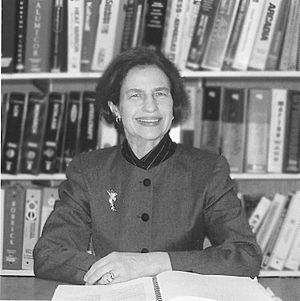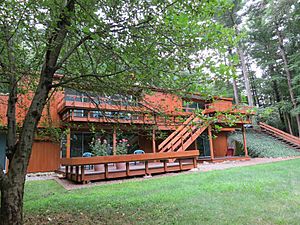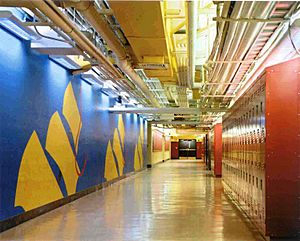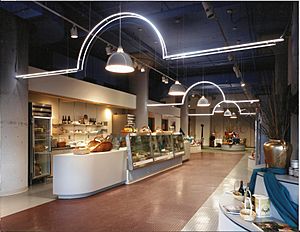Doris Cole facts for kids
Doris Cole (born March 9, 1938) is an American architect and author. She helped start an architecture company called Cole and Goyette. Doris Cole wrote the first book in the United States about women in architecture. It's called From Tipi to Skyscraper: A History of Women in Architecture.
Contents
Growing Up and School
Doris Cole was born in Chicago, Illinois. She grew up there and in Grand Rapids. She finished high school in 1955. Later, she went to Radcliffe College and graduated in 1959. She then earned a Master of Architecture degree from Harvard University in 1963.
Being an Architect
Doris Cole started her career working in architecture offices. She worked in Paris, France, and then in Boston, Massachusetts.
In 1981, she co-founded her own company. It was called Cole and Goyette, Architects and Planners. Her partner was Harold Goyette. Their company was in Cambridge, Massachusetts. They designed many types of buildings. These included schools, businesses, and homes. They worked for both public and private clients.
Cool Projects and Awards
Doris Cole worked on many important projects. She helped renovate and add to the East Boston High School. She also worked on schools in Everett and Gardner. She even designed a private home and barn in Westwood.
In 1994, Doris Cole became a Fellow of the American Institute of Architects. This is a special honor for architects. In 2006, she won the Women in Design Award of Excellence. This award was from the Boston Society of Architects.
In 2012, Doris Cole started her own new company. It is called Doris Cole FAIA, Architecture/Planning.
Writing and Community Work
Doris Cole is also a writer. She wrote the first book about women in architecture in the United States. It is called From Tipi to Skyscraper: A History of Women in Architecture. She has written other books too. These include Eleanor Raymond, Architect and School Treasures: Architecture of Historic Boston Schools.
She has also helped her community. She has been part of groups like the Harvard Alumni Association. She has given talks at places like the University of Virginia.
You can find her professional papers at Harvard University's Loeb Library. This collection shows her work and ideas as an architect. The library also has posters she made. These posters share her thoughts about architecture. They cover the past, present, and future of an architect's life.
Some of Her Projects
Here are some of the projects Doris Cole has worked on:
- A children's theater design for a competition in Prague in 2011.
- A memorial design for the Atlantic City Boardwalk in 2010.
- Designs for the Dubai Creek Tower in 2009.
- Renovating and adding to Jeremiah Burke High School in Boston in 2004.
- Working on East Boston High School in 1996 and 2001.
- Renovating and adding to Higginson, Mason, and Stone Schools in Boston in 1995.
- Working on Everett and Gardener Schools in Boston in 1993.
- Designing a Child Care Center at Boston City Hall in 1988.
- Designing the Damson & Greengage Gourmet Deli in Boston in 1987.
- Designing a private home and barn in Westwood, Massachusetts, in 1988.
Awards and Exhibitions
Doris Cole has received many awards and had her work shown in exhibitions:
- She became a Fellow of the American Institute of Architects in 1994.
- Her Multimedia Interactive Children's Theater design was shown in 2011.
- She won an Award of Excellence from the Boston Society of Architects in 2006.
- She received the Boston Preservation Alliance Achievement Award in 2001 for East Boston High School.
- She also won the Massachusetts Historical Commission Preservation Award in 2001 for East Boston High School.
- Her work on the Thomas Gardner and Edward Everett Schools won an Interior Design Award in 2000.
- Her work was part of an exhibition in New York in 2012 called "Change: Architecture and Engineering in the Middle East."
- Her Damson and Greengage Restaurant project was in an exhibition called "Many More: Women in Architecture."
- She received research grants from the Boston Society of Architects in 2004 and the National Endowment for the Arts in 1981–1982.





